What is the best electric SUV of 2024? The 2024 Kia EV9 took the throne of all-electric SUVs for 2023/2024 by combining the royal treasures of former kings EV6 and Telluride. In this battlefield, the spotlight is firmly on the supremacy battle between the all-new 2024 Kia EV9 and its older sibling, the EV6. The Kia EV9, the first electric 3-row midsize SUV from a mainstream brand, is armed with credentials to lead the market.
The EV9’s price point isn’t the sharpest weapon of war, but the SUV surpassed expectations with its sophisticated aesthetic, premium features, and generous interior space. Set to hit the market in the last quarter of 2023, the EV9 will duke it out with established luxury SUVs like the Rivian R1S and the upcoming Volvo EX90.
At the moment, the 2024 Kia EV9’s main draw is its novelty – a completely new entrant in the midsize 3-row SUV segment, fully electric and ready to redefine standards. It’s a stylish and innovative frontrunner in a market anticipating the Hyundai Ioniq 7 electric 3-row SUV.
See also: Meet The All-New 2024 Ford Explorer Electric
EV9 vs. EV6 Sibling Rivalry
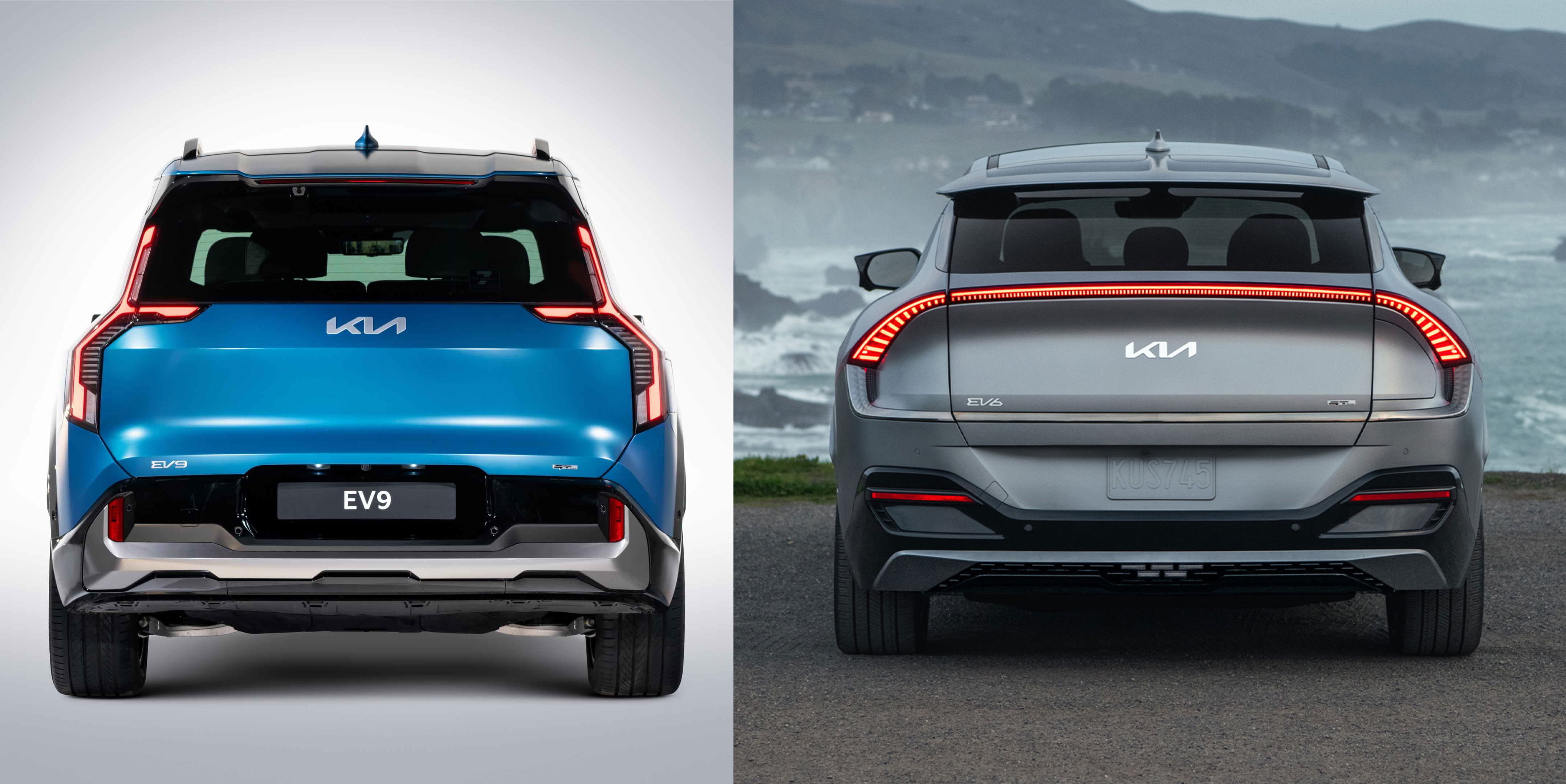
On the other side of the ring stands the 2024 Kia EV6, already a superstar and a mainstream electric SUV veteran with two years of market engagement in its belt. This visually captivating, all-electric SUV is armed with an array of trims, an extensive list of features, and swift charging capabilities.
Defying categorization with elements of a hatchback, sports car, and futuristic styling, the EV6 proudly secured its place as the Numero Uno among the top-rated models in its segment.
As the EV6 steps out with subtle yet welcome updates, the EV9 enters the coliseum combining the best elements of Kia's acclaimed EV6 and the three-row Telluride. With masterstroke armaments like that, the likely winner in this battle seems rather clear.
However, the road isn’t without speed bumps. For example, while the EV9 shares its predecessor’s spacious comfort and feature-rich interior, it failed to muscle through with as much zest in terms of range and performance.
Currently enjoying a remarkable score of 8.6 out of 10 in the US News Electric SUVs ranking category, the 2024 Kia EV9 promises a distinctive proposition in the evolving EV landscape. Our head-to-head comparison reveals why the EV9 might just be the game-changer in the 2024 electric SUV showdown.
Warrior Profile: Kia EV6
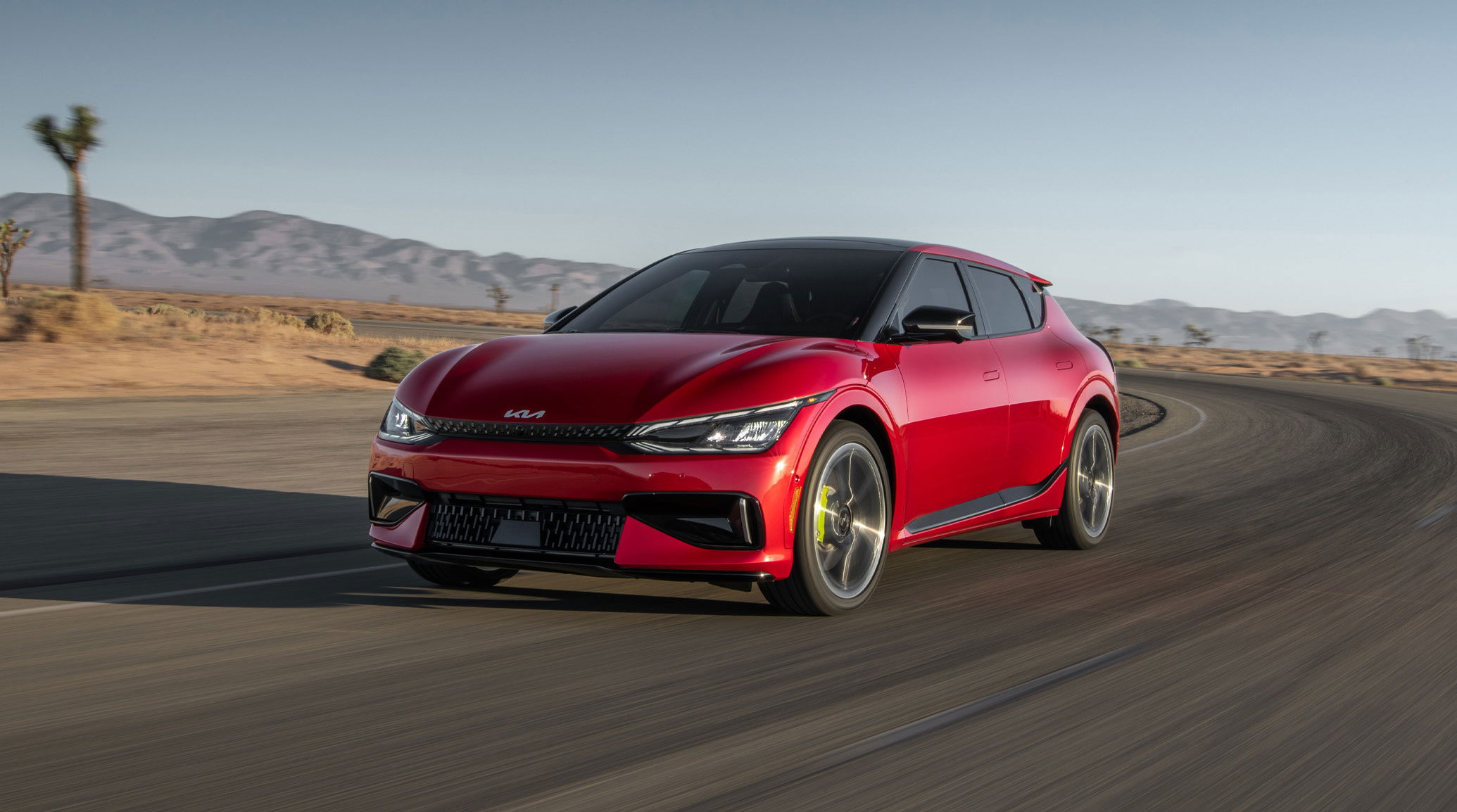
The Kia EV6 and EV9 offer distinct features and capabilities that cater to diverse preferences. The EV6 excels in transforming the electric driving experience into a much more enjoyable journey.
Kia did a wonderful job swerving the EV6 away from the complexities often associated with EV ownership, resulting in a pleasant ride, commendable performance, and a generously spacious cabin. The SUV’s distinctive, effortlessly cool design is a formidable weapon in its armor.
Boasting an EPA-estimated range of up to 310 miles, the EV6 provides a substantial buffer between charges. The performance-oriented EV6 GT, with a powerful 576-horsepower engine, adds a thrilling dimension to the driving experience.
Rapid recharging, with a peak DC-fast charging rate of approximately 225 kW, makes it a practical choice for long-distance travel on electric power.
Outshining contenders like the Ford Mustang Mach-E, Volkswagen ID.4, and Nissan Ariya, the EV6 was decidedly the king of electric SUVs, though slightly pricier than its fiercest rival, the Hyundai Ioniq 5.
Warrior Profile: Kia EV9
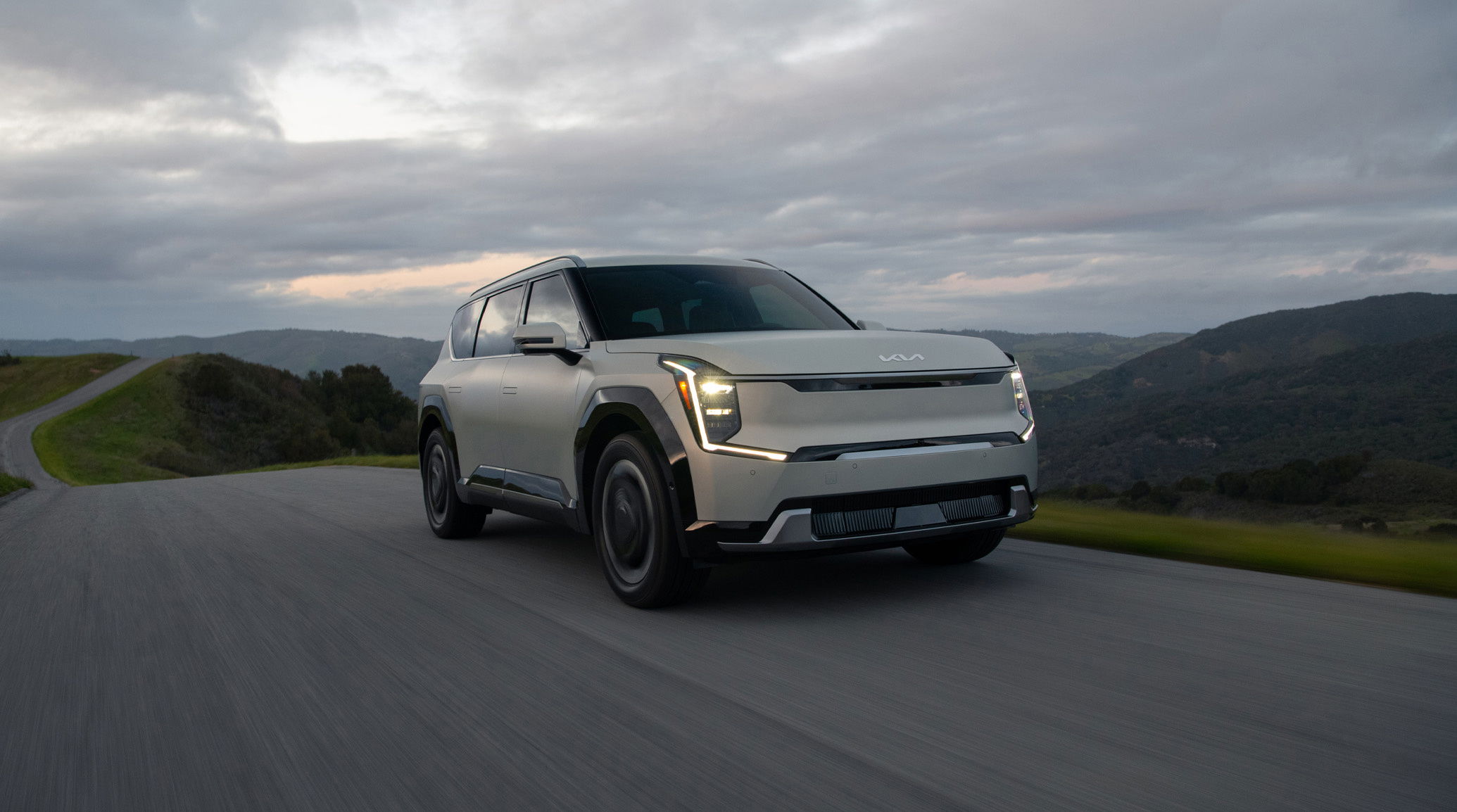
The three-row EV9 stands shoulder to shoulder with its gas-powered counterparts, notably the Telluride. Sharing its platform with the upcoming Hyundai Ioniq 7, the EV9 offers versatility with both rear- and all-wheel-drive options, the latter featuring a robust 379-horsepower dual-motor powertrain.
Regardless of the drivetrain, the EV9 boasts a substantial 99.8-kWh battery, providing an EPA-estimated 304 miles of range for the AWD and RWD Long Range models equipped with a single motor.
The standard RWD EV9, equipped with a 76.1-kWh battery, achieves an EPA-estimated 230 miles of range. Beyond its impressive range, the EV9 showcases a significant towing capacity of 5,000 pounds, mirroring the gas-powered Telluride.
A standout feature is its practical third row of seats, appealing to families seeking both space and sustainability. With a competitive starting price below $60k, the EV9 emerges not only as one of the few three-row EVs but also as an exceptional performer in its size category.
2024 Kia EV9 vs. Kia EV6 Performance Comparison:

The EV9 electric SUV offers a versatile range of powertrains, starting with the base version brandishing 215 horsepower and 258 lb-ft of torque from a single rear-wheel-drive motor. While its eight seconds 0-60 mph acceleration time hardly inspires confidence, the EV9 stacks most of its arrows in the quiver labeled “practicality for family driving.”
So, opting for the 201-horsepower single-motor version with a larger battery extends the range to an impressive 300 miles, albeit with a slightly slower acceleration of just over nine seconds.
If you retrieve the dual-motor variant with all-wheel drive, the EV9 unloads an impressive 379 horsepower and 443 lb-ft of torque, propelling it to 60 mph in a quicker 5.3 seconds. Motor Trend tested an AWD EV9 GT-Line and clocked 4.5 seconds from zero to 60 mph.
The EV6 should enjoy its fleeting victory on the performance aspect because the upcoming EV9 GT promises an even more thrilling experience beyond the GT-Line’s 516 lb-ft of torque on tap.
Despite the extra weight due to the larger body and EV battery, the EV9 maintains an enjoyable drive characterized by excellent visibility, a quiet cabin, and responsive steering. As for the EV6, the base 167-hp Light RWD model is as fast as the weightier EV9, clocking a 0-60 mph time of eight seconds.
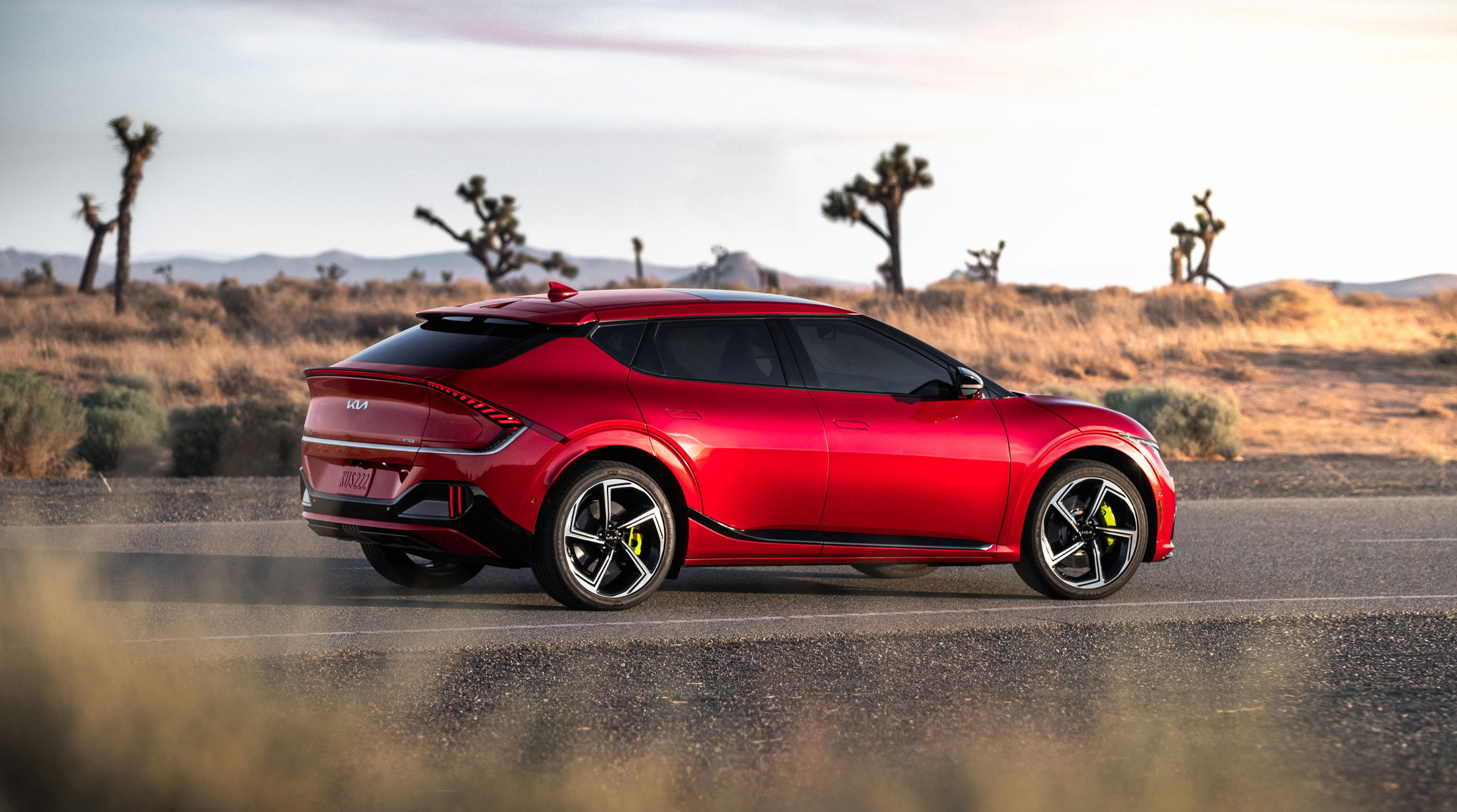
The EV6 Light Long Range RWD, thanks to a larger battery and 225 horsepower, accelerates more briskly in 7.2 seconds. Opting for the all-wheel-drive configuration and a second motor updates the EV6’s oomph to 320 horsepower, resulting in a rapid 0-60 mph acceleration time of just 5.1 seconds. But the EV6 wasn’t done.
While the EV9 awaits its ultimate GT champion, the EV6 already has its GT and GT-Line variants, wielding an awe-inspiring 576 horsepower that could propel it from rest to 60 mph in an astonishing 3.4 seconds.
If you ever had to ask how the EV6 became the king of electric SUVs, remember that the GT-Line is quicker than some Lamborghini models. Perks like precise steering, well-weighted brakes, and the option for one-pedal driving set the EV6 apart as a thrilling and versatile electric SUV.
The Verdict:
The EV9 leans towards practicality, offering a range-focused approach with multiple powertrains catering to diverse needs, especially for families. On the other hand, the EV6 takes a bold stance, delivering a spectrum of power outputs that range from efficient to outright exhilarating.
See also: Speed Demons on Four Wheels: The Top 12 Fastest American SUVs You Need To Know
2024 Kia EV9 vs. EV6: Charging And Real-World Range Comparison
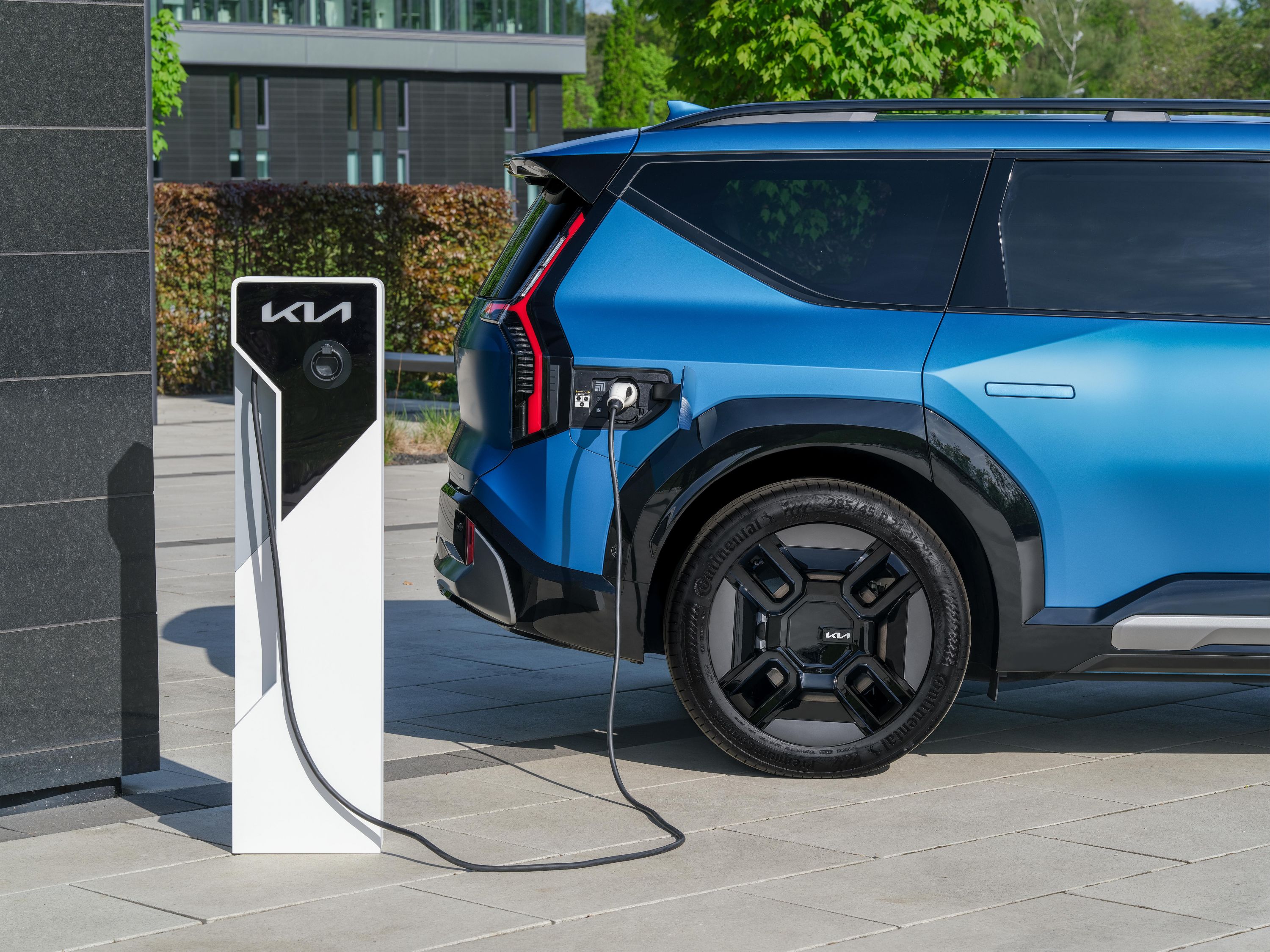
In the EV9 lineup, the entry-level Light model kicks off with a 76.1-kWh battery, delivering a commendable EPA-estimated 230 miles of driving range. Opting for the Light Long Range model or the e-AWD variants, equipped with a larger 99.8-kWh pack, extends the range significantly.
The Light Long Range model boasts an EPA-rated 304 miles per charge, while the e-AWD models, Wind and Land, offer an EPA-estimated 280 miles. The top-tier GT-line trim, prioritizing performance, sees a slight dip in range to 270 miles.
Putting these numbers to the test, the EV9 GT-Line impressively covered 240 miles during a 75-mph highway range test, just shy of its estimated 270-mile range.
Harnessing Kia's 800-volt electrical architecture, the EV9 excels in rapid charging, posting a maximum DC fast charging speed of 230 kW. This translates to adding 100 miles of driving range in just 13 minutes, showcasing one of the highest average charging speeds on EV land.
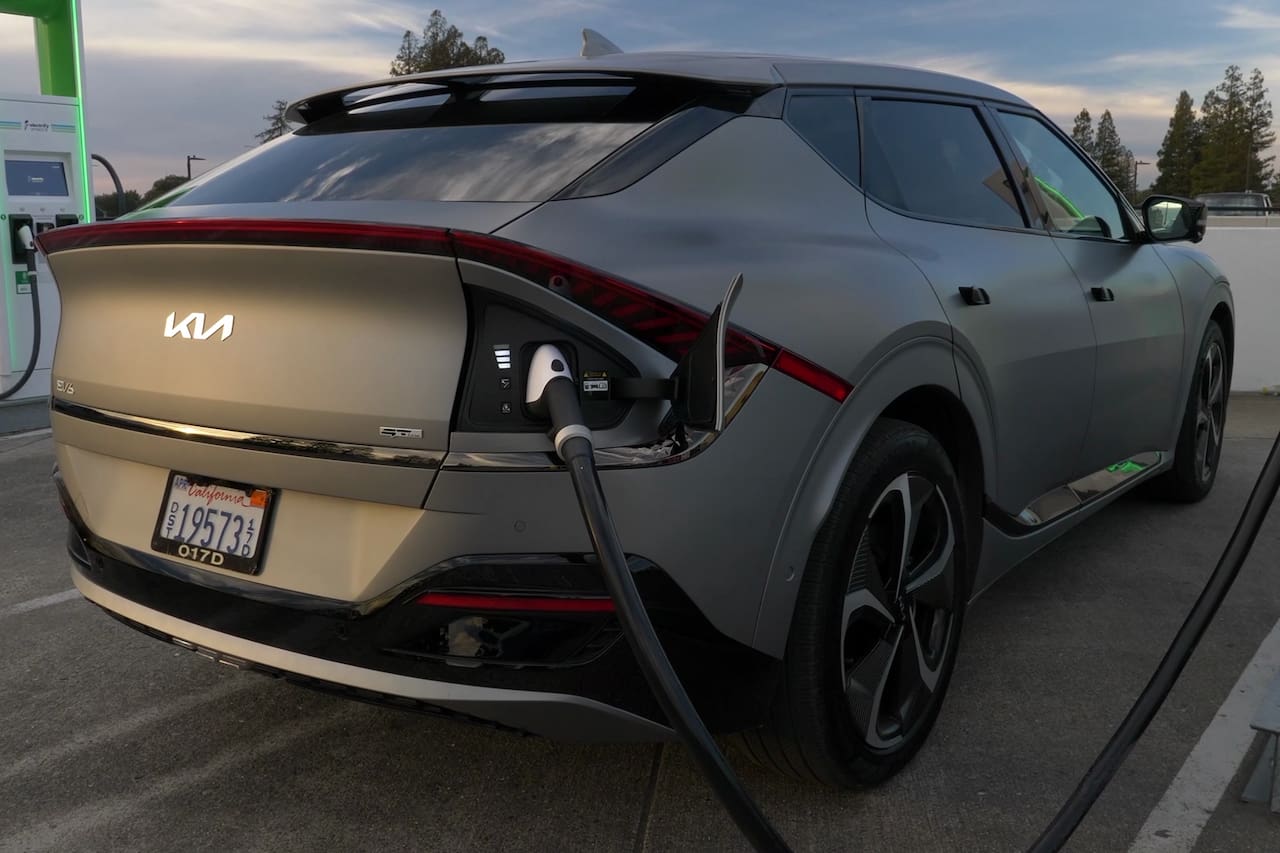
Marginally besting the EV9 in this aspect as well, all EV6 models feature a 77.4-kWh battery pack, energizing the rear-drive model with an impressive EPA-rated range of up to 310 miles. However, the high-performance GT model sacrificed some range but still delivers a respectable 206 miles per charge.
Real-world highway driving tests revealed the all-wheel-drive Wind model covering 230 miles, while the potent GT model offered a highway range of 190 miles.
The EV6’s shared 800-volt EV architecture proves its mettle in rapid charging. Kia claims the battery can be charged from 10 to 80 percent in under 18 minutes using a 350-kW fast charger—a claim substantiated through testing.
Notably, this setup gets you 70 miles worth of juice in less than 5 minutes. For more conventional charging, the 11-kW onboard charger is expected to refill the battery from 10 to 100 percent in 7 hours when connected to a Level 2 outlet.
The Verdict:
Sharing Kia’s cutting-edge EV platform, the EV9 emphasizes range across its lineup, while the EV6 strikes a balance between impressive range and dynamic performance.
Kia EV9 vs. EV6 Battery Lifecycle And Charging Cost Comparison
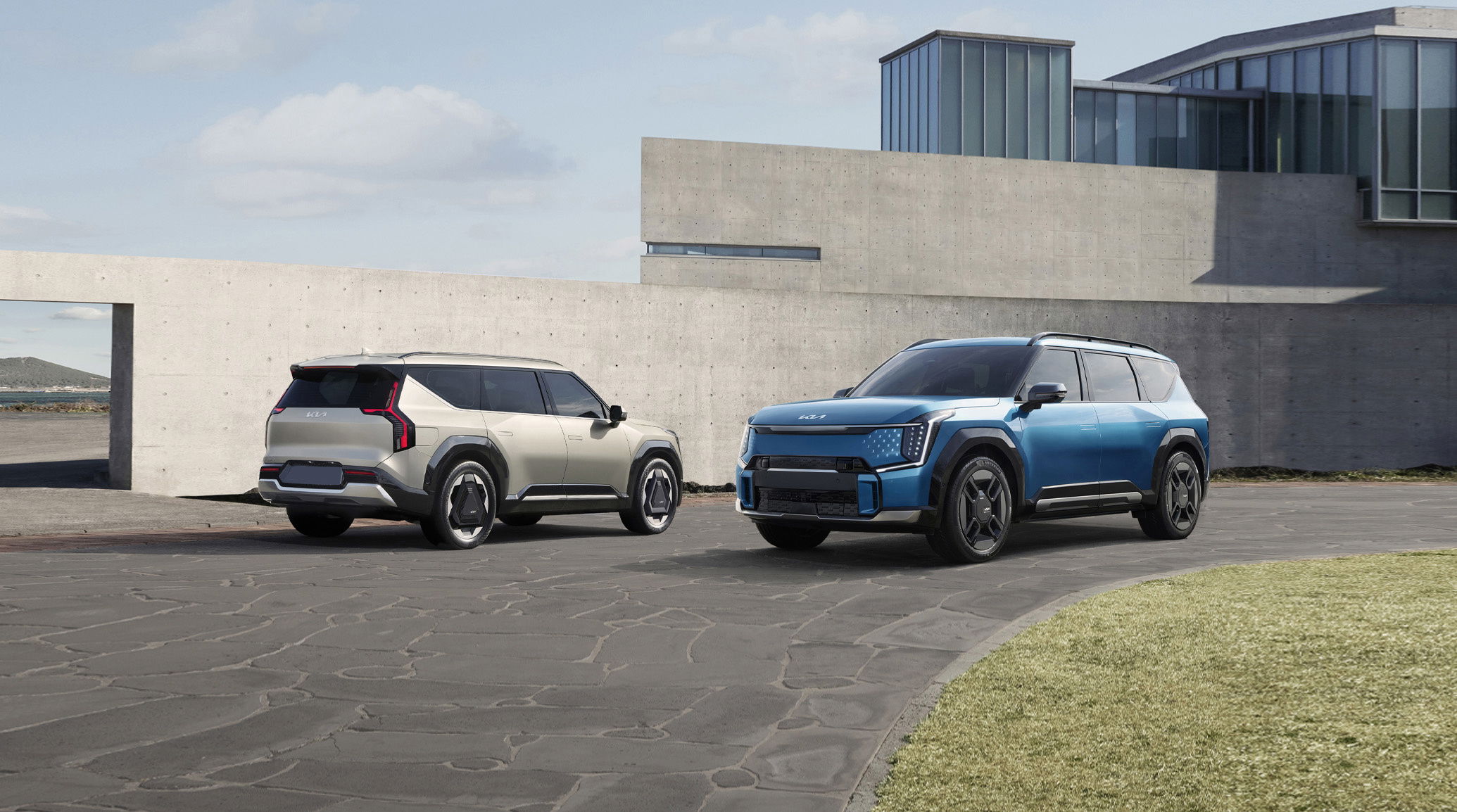
The EV9 owners can expect to pay approximately $800 to $1,000 to juice the SUV each year, factoring in an average of 15,000 miles driven per year. However, the actual cost to charge the battery annually depends on electricity rates in your locality.
Given the EV9's novelty, we can't speak for the battery's longevity but Kia’s generous warranty package, covering the battery pack under a generous 10-year/100,000-mile coverage, is a vote of confidence in the battery's reliability.
Comparatively, the EV6 bests the EV9 in terms of the battery’s annual charging cost. The EPA estimates owners pay $600 to $800, based on approximated 15,000 annual miles driven per year, breaking it down to 45% highway driving and 55% city driving.
As with the EV9, actual charging expenses depend on regional electricity fees, individual driving patterns, and other influencing factors. Kia is tight-lipped about the EV6’s battery longevity, but it shares the EV9’s extensive 10-year/100,000-mile warranty.
The Verdict
Both the EV6 and EV9 combine economic charging estimates with a parallel 10-year/100,000-mile battery warranty, ensuring drivers not only enjoy efficient charging but also benefit from the reassurance of extended coverage.
2024 Kia EV9 vs. EV6: Electric Range Comparison
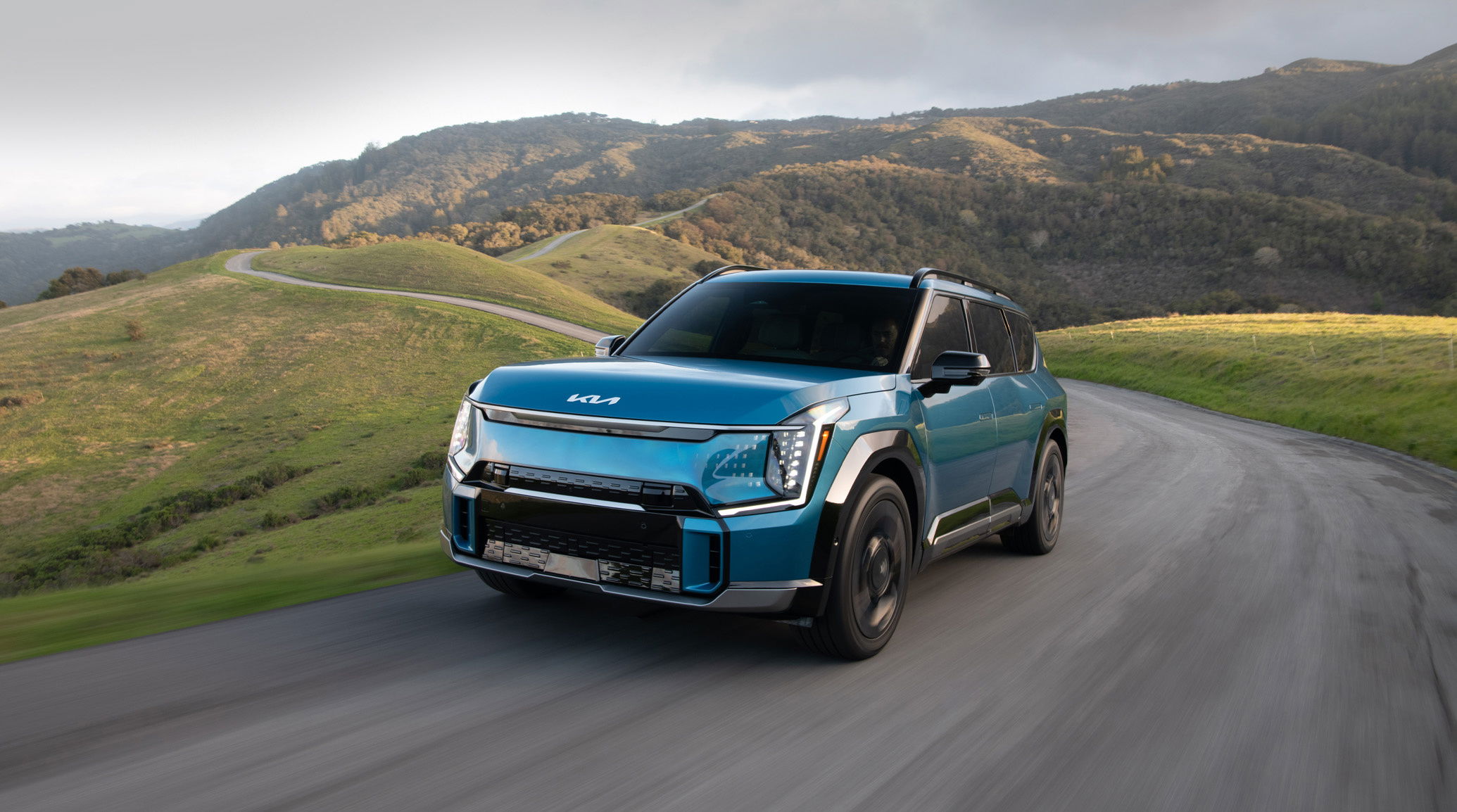
The 2024 Kia EV9 returns various MPGe figures across its lineup. The EPA estimates the EV9's efficiency to range from 80 to 89 MPGe, depending on the drivetrain. Notably, the EV9 Light model stands out as the most efficient, achieving an impressive 89 MPGe with the larger 99.8 kWh battery pack and rear-wheel drive.
Conversely, the performance-oriented GT-Line, equipped with all-wheel drive, garners the lowest MPGe rating of 80. Again, the Kia EV6 bests its new sibling in terms of electric-only driving range. The single-motor EV6 models uniformly shine with a combined EPA rating of up to 117 MPGe.
The EV6’s efficiency remains commendable with the dual-motor variant, returning a competitive rating of 109 MPGe equipped with standard 19-inch wheels and a slightly lower 96 MPGe with the optional 20-inch wheels.
The GT EV6 champ model returns a much lower 79 MPGe on par with the EV9’s GT-Line high-performance model.
The Verdict
The Kia EV9 and EV6 harmonize efficiency with performance, and both sacrifice efficiency on the altar of performance, while the EV6 delivers better efficiency.
See also: Mazda Is Reportedly Working On A Next-Gen CX-5 SUV Due By 2025: What We Know So Far
2024 Kia EV9 vs. EV6 Interior Design And Cargo Volume Comparison

Deviating from the typical Spartan EV interiors, the 2024 EV9 adopts a restrained yet sophisticated design, eschewing stark minimalism in favor of functional styling.
The interior radiates familiarity and user-friendliness, adorned with clean lines and neat, seamless styling on par with the EV9's premium aspirations. Every seat in the EV9, including the executive-class third row, is reputedly comfortable, including a power-reclining seat accommodating even taller passengers.
EV9's extended wheelbase is more than 7 inches longer than the spacious Kia Telluride, translating to a lounge-like vibe within the EV9's cabin. Legroom is abundant across all three rows, complemented by USB-C ports for modern connectivity.
In pursuit of sustainability, the EV9 features simulated leather free from animal products and incorporates recycled materials. Even with the EV9’s longer wheelbase, Telluride offers more cargo space.
Even so, you get a commendable 20.2 cubic feet of cargo space behind the EV9’s third row, expanding to an impressive 81.9 cubic feet with the second and third rows folded.
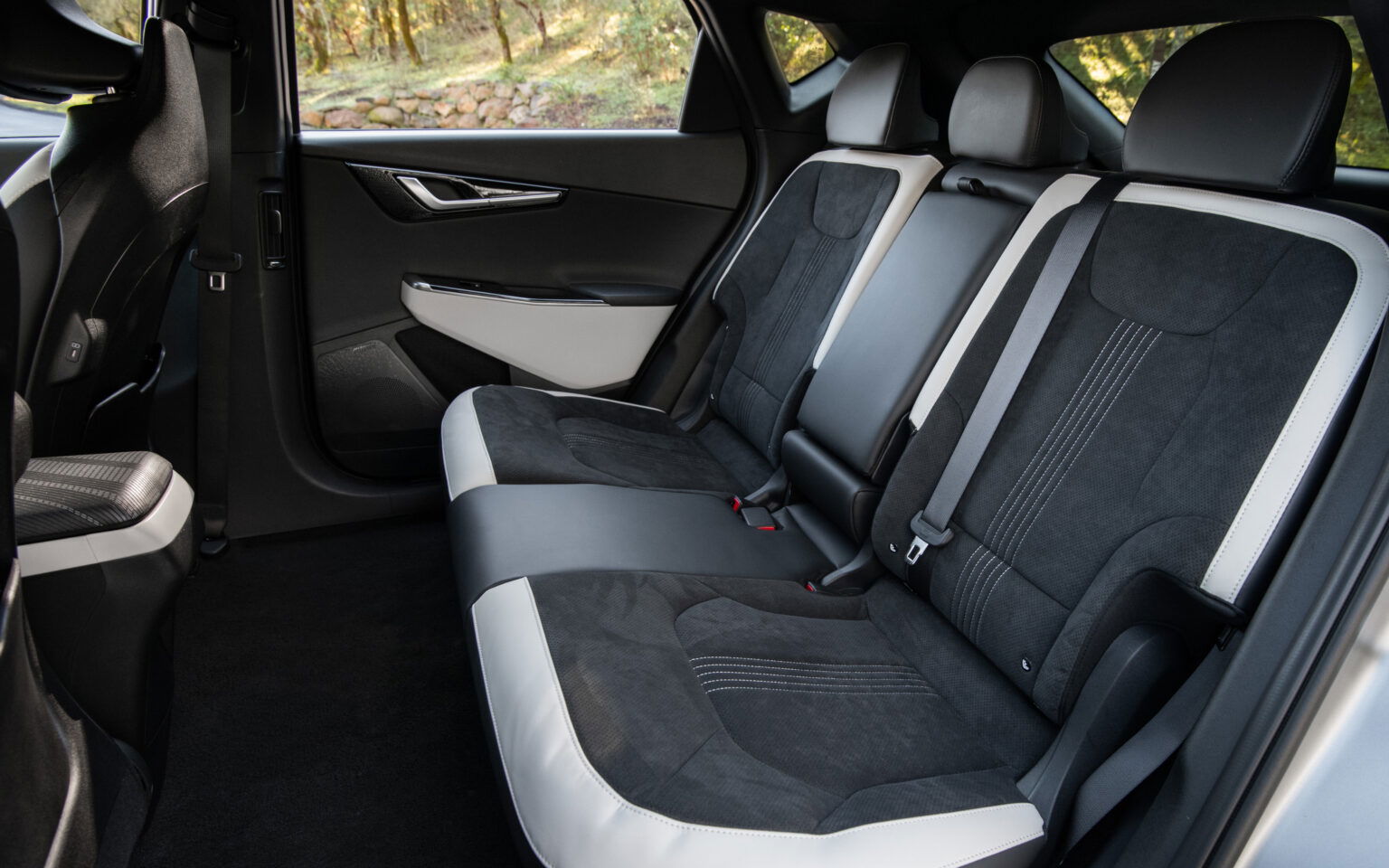
As for the EV6, the cabin greets you with the same futuristic vibes of the exterior's innovative design. Decidedly different from its Hyundai Ioniq 5 sibling, the EV6's interior leans towards a more driver-focused and intimate feel.
The wide center console, housing essential functions like the start/stop button and a rotary dial for driving modes, contributes to a cohesive and functional layout. The dual 12.3-inch screens, serving infotainment and instrument cluster duties, imbue the EV6's cabin with a luxurious ambiance.
Like the EV9, the EV6 also adopts recycled materials and animal-free simulated leather for the cabin materials. Thanks to its dedicated electric vehicle platform, the EV6 boasts a flat floor and expansive interior room for a 5-seater configuration.
Rear passenger space is optimized through a long wheelbase and innovative front seats. The GT model introduces lightweight front sport seats to promote comfortable spirited driving.
In terms of cargo space, the EV6's exterior design delivered a storage capacity of 24.4 cubic feet, expanding to 50.2 cubic feet with rear seats folded. Comparatively, the boxier Hyundai Ioniq 5 offers 27.2/59.3 cubic feet, while the Tesla Model Y offers 76 cubic feet of cargo space.
The Verdict
The EV9 favored interior simplicity and bested the EV6's cargo volume by a wide margin. The EV6 presents a futuristic cabin ambiance but couldn't compete with segment rivals like the Tesla Model Y's cargo volume.
Kia EV9 vs. EV6: Infotainment And Tech Features Comparison

The EV9's dashboard showcases a futuristic design highlighted by a wide glass panel. This expansive interface integrates a 12.3-inch digital gauge cluster on the left, a 5-inch touchscreen for climate controls in the center, and a 12.3-inch touchscreen for infotainment functions on the right.
Despite the cutting-edge appearance, the layout remains refreshingly user-friendly with simple menus, large icons, and a configurable layout, resulting in an intuitive, visually striking interface.
Beneath the main display, tactile toggles for air temperature and fan speed coexist with a knurled scroll wheel for audio volume control, effectively blending convenience and functional old school.
A touch-sensitive panel adorned with sleek backlit touchpoints provides quick access to the home screen, map, and other settings.
The EV9's infotainment arsenal boasts a comprehensive standard package, including the aforementioned 12.3-inch and 5-inch touch screens, navigation, Apple CarPlay, Android Auto, wireless device charging, Bluetooth, six USB ports, HD Radio, satellite radio, an eight-speaker stereo, and a Wi-Fi hotspot.
The available 14-speaker sound system beckons the audiophiles among us. Additional standard features, from a digital gauge cluster to tri-zone automatic climate control and an in-car intercom, elevate the EV9's interior sophistication. Optional sunroof and ambient lighting add a touch of personalized luxury.
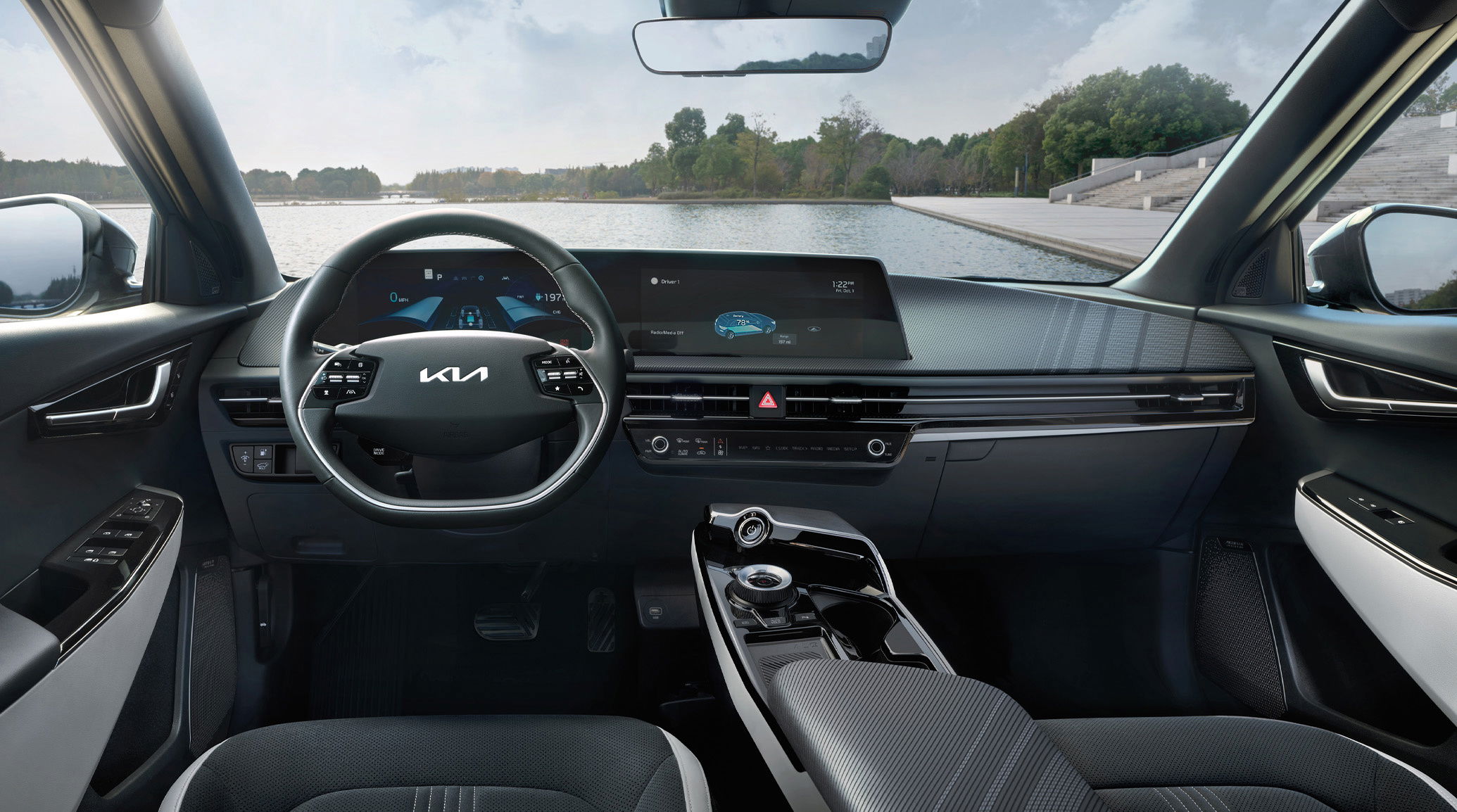
The EV6, on the other hand, flaunts a feature-packed infotainment system that reportedly feels less intuitive. It would wrestle more competitively with the EV9 if the menu navigation is as user-friendly as the 12.3-inch touchscreen displays sharp graphics.
While the screen feels responsive, the capacitive touch panel for audio and climate functions proves a bit frustrating, especially when you have to use them while driving. The one thing no one can deny about the EV6, though, is the array of infotainment and tech features that make up the in-car technology.
The EV6’s standard infotainment features include the aforementioned 12.3-inch touch screen, Apple CarPlay, Android Auto, navigation, a Wi-Fi hotspot, wireless device charging, HD Radio, satellite radio, Bluetooth, and a six-speaker stereo.
Audiophiles may opt for the available 14-speaker Meridian stereo. Additional standard features, such as a 12.3-inch digital gauge cluster, dual-zone automatic climate control, push-button start, remote start, proximity keyless entry, and an auto-dimming rearview mirror, enhance the EV6's appeal.
These are besides the optional features like ambient LED interior lighting, a universal garage door opener, and a sunroof.
The Verdict
The EV9 marries futuristic aesthetics with ergonomic simplicity, offering an intuitive interface without sacrificing visual allure. On the other hand, the EV6 dazzles with an extensive feature set but grapples with navigational intricacies.
Kia EV9 vs. EV6: Safety And Warranty Comparison
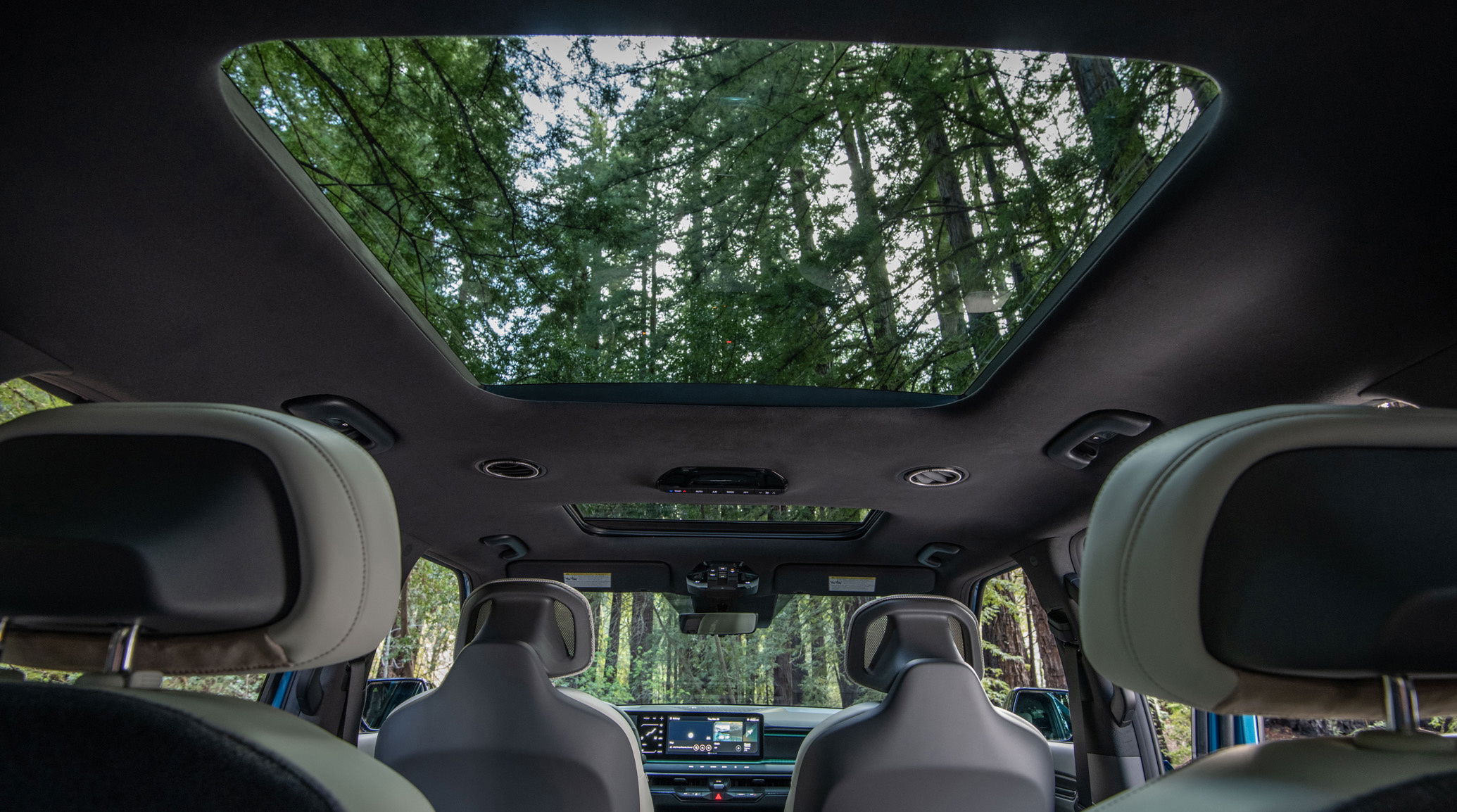
The EV9 is a new kid on the block and isn’t due for crash-testing agency reports. Even so, the market should be confident in Kia's robust suite of driver assistance technologies.
Notably, Kia offers forward collision warning with automatic emergency braking, pedestrian/cyclist detection, blind-spot monitoring, adaptive cruise control, and intersection assistance as standard safety equipment.
The automaker’s comprehensive safety net further unfolds with ten airbags strategically placed throughout the EV9. Beyond safety, Kia reinforces its commitment to customer satisfaction through industry-leading warranties.
The company’s new vehicle coverage spans five years or 60,000 miles, whichever comes first, with an impressive 10-year or 100,000-mile coverage for powertrains and EV batteries alike.
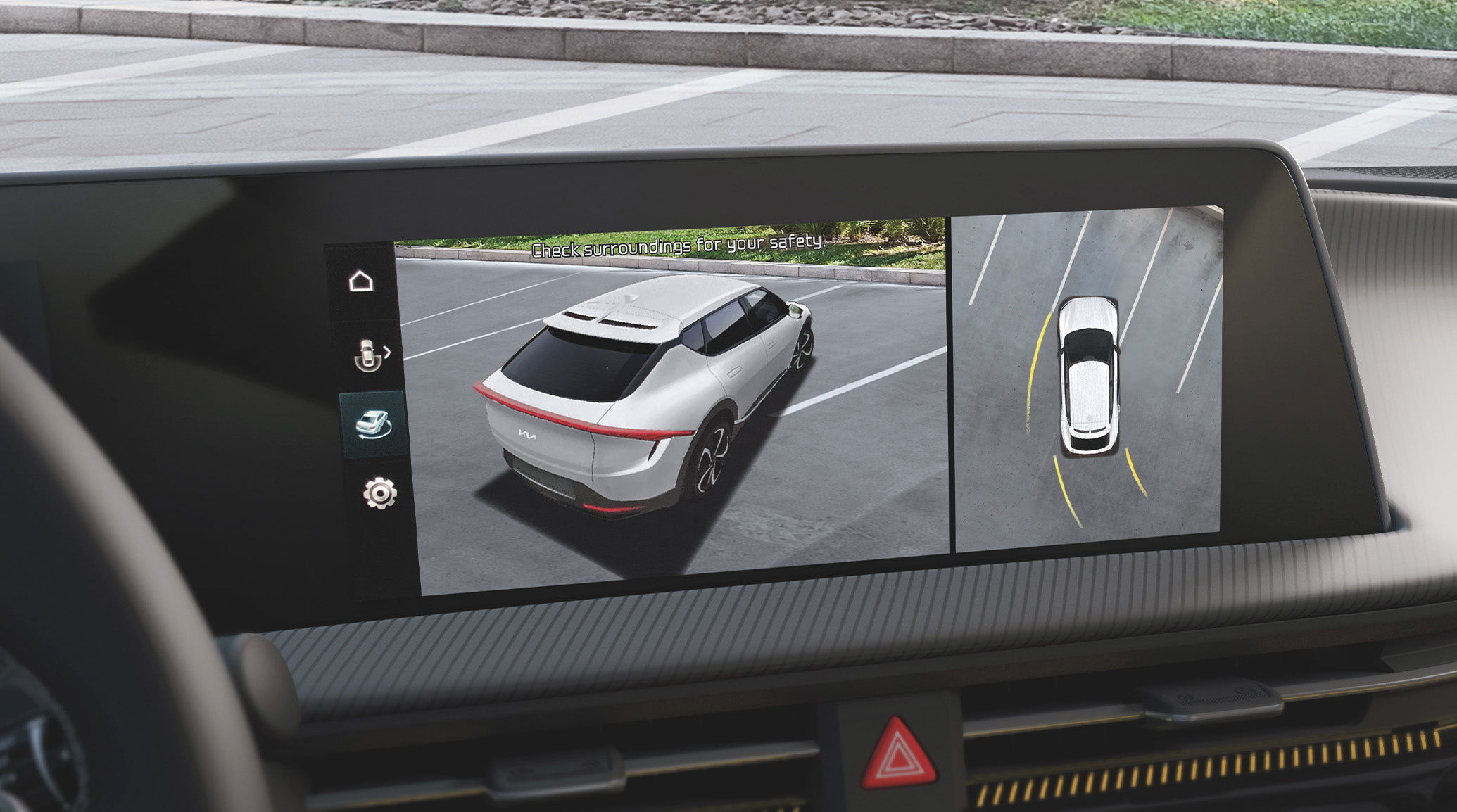
As for the EV6, it’s been around long enough to earn the Insurance Institute for Highway Safety (IIHS)’s coveted Top Safety Pick+ badge. While the National Highway Traffic Safety Administration's (NHTSA) rating of the EV6 isn’t here yet, the IIHS’ recognition is a solid vote of confidence in the SUV's crashworthiness.
Kia's excellent warranty echoes in the EV6 as well, mirroring the reassuring coverage seen in the EV9. The basic new-car coverage spans five years or 60,000 miles, surpassing industry norms.
Similarly, the drivetrain warranty extends a commendable 10 years or 100,000 miles, demonstrating Kia's confidence in the EV6's long-term reliability.
The Verdict
The EV9, despite pending crash-test results, leans on an extensive suite of driver assistance technologies, which, coupled with Kia's industry-leading warranties, presents a compelling package for those placing a premium on safety and long-term peace of mind. On the other hand, the EV6 has earned the IIHS’s highest safety accolade and enjoys Kia’s segment-leading warranties.
See also: The World’s Top-10 Highest Horsepower Plug-In Hybrids
Kia EV9 vs. EV6: Pricing And Power Comparison
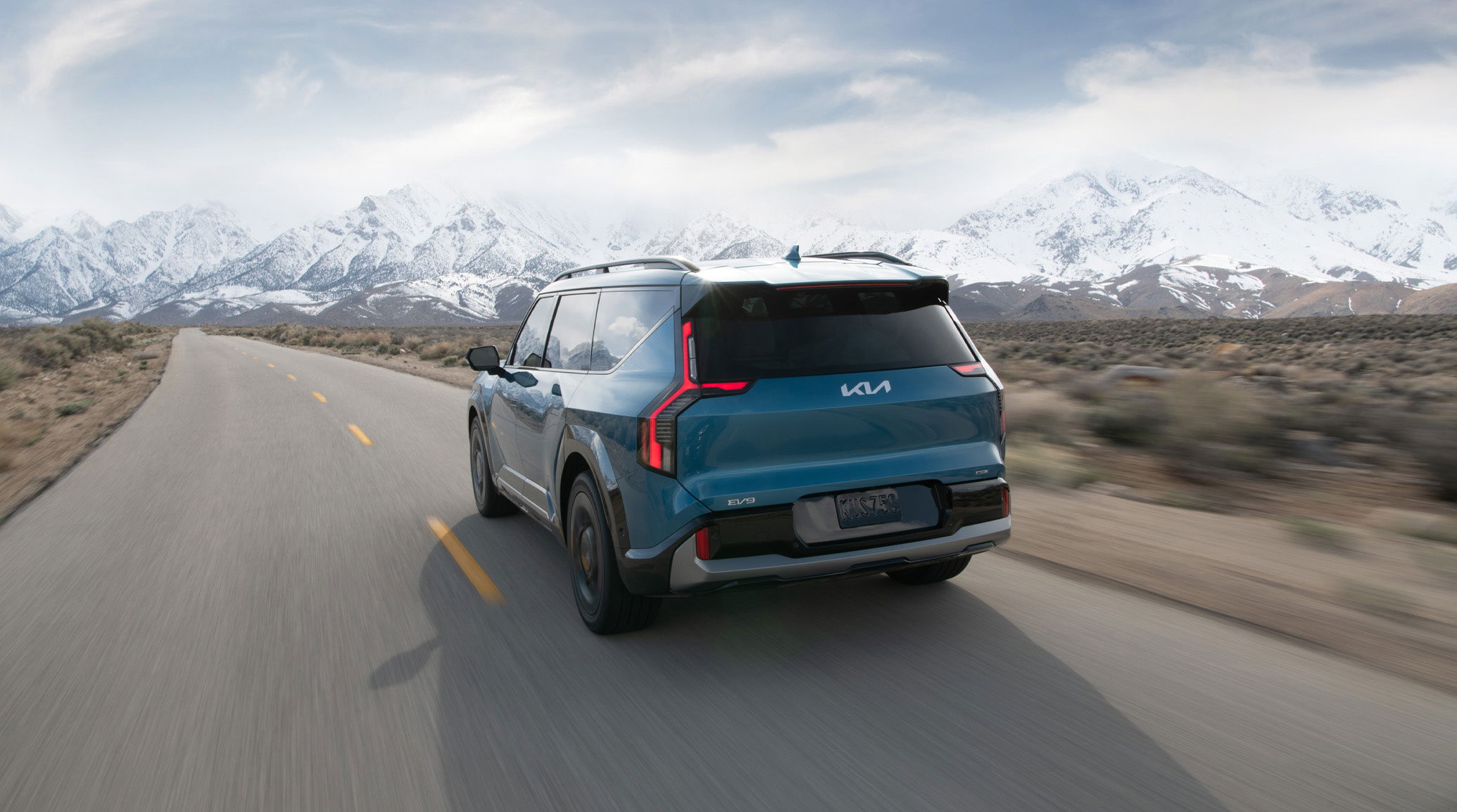
The 2024 Kia EV9 entry-level Light trim commands a base MSRP of $54,900. This variant features a 76.1-kWh battery pack, a 215-horsepower electric motor, and an estimated range of 223 miles on a full charge.
Stepping up to the EV9 Light Long Range at $59,200 enhances the battery capacity to 99.8 kWh, extending the range to a commendable 300 miles, albeit with a slight reduction in motor output to 201 horsepower.
The EV9 Wind, priced at $63,900, introduces a second electric motor, elevating the total output to an impressive 379 horsepower and ushering in all-wheel drive. However, this power surge resulted in a trade-off, dropping the range between 253 and 270 miles.
The EV9 Land, at $69,900, inherits the dual-motor powertrain while adding luxurious amenities like heated and ventilated rear seats and a surround-view camera system.
The pinnacle, EV9 GT-Line, priced at $73,900, sacrifices a bit of range (243 miles) but compensates with luxuries and elevated tech features like remote parking assist and a self-leveling rear suspension.
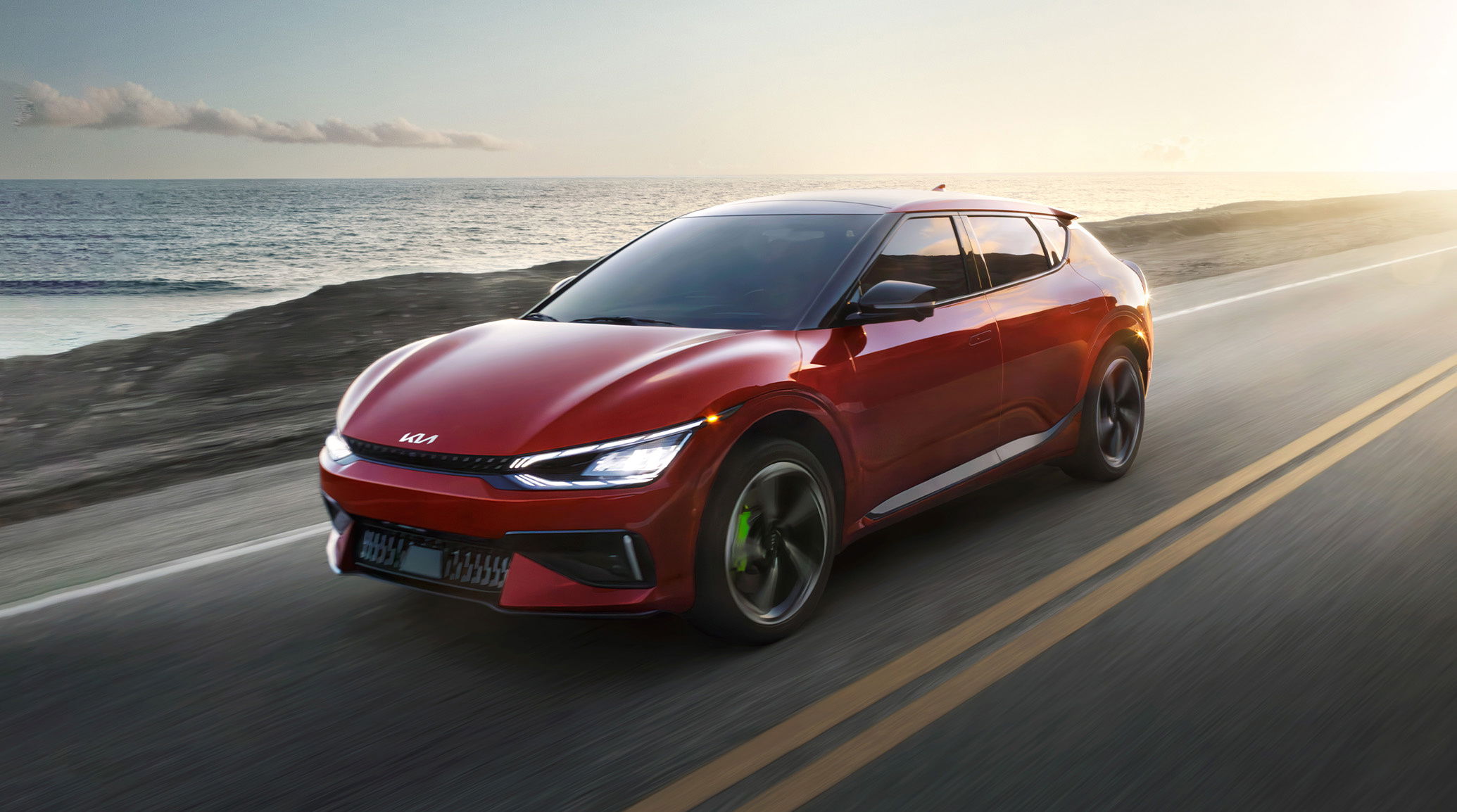
As for the EV6, the cost of getting started with the base Light trim ranges from $42,600 (Standard RWD powertrain) to $49,850 (Long Range AWD powertrain). While the price point is significantly lower than the EV9, it’s still a slightly expensive bracket for an electric SUV.
Regardless of the powertrain, the Light trim comes generously equipped with features like heated front seats and a 12.3-inch touchscreen.
The Wind trim starts at $48,700 for the 225-horsepower rear-wheel-drive powertrain and $52,600 for the 320-horsepower all-wheel-drive version. This tier introduces extra luxuries such as synthetic leather upholstery and front parking sensors.
The GT-Line, priced between $52,900 and $57,600, inherits the Wind model's standard features while adding sportier styling, a sunroof, and enhanced driver-assistance features like a surround-view camera system.
For enthusiasts seeking a performance-driven experience, the GT trim, starting at $61,600, introduces a trim-exclusive, 546-horsepower all-wheel-drive powertrain. The updated power also comes in the company of a sports suspension and an electronic locking rear differential.
The Verdict
The 2024 EV9 is significantly and justifiably more expensive than an EV6, already slightly pricier than segment rivals. The EV6 considers 2-3-rowers like Tesla Model Y its rivals, while the EV9 contends with bigger dogs like Model X. The EV9 justifies the expense with superior range capabilities and luxury-laden trims.
Final Word
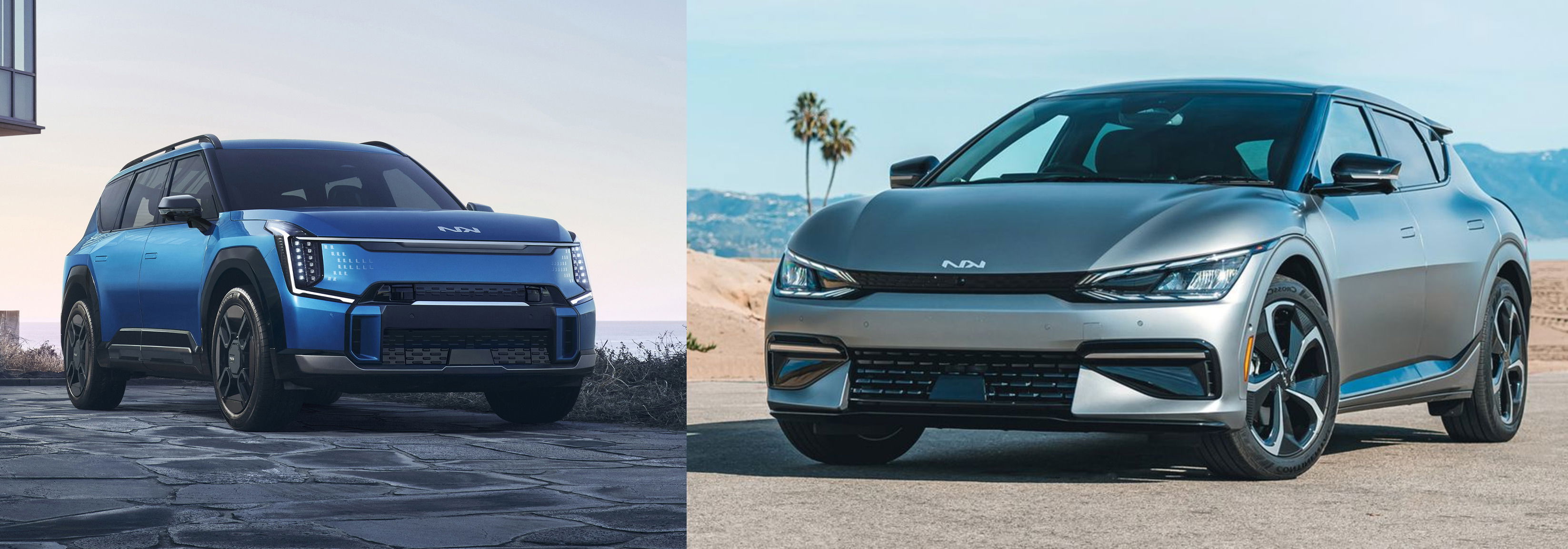
As a sea of electric SUVs vie for our attention, the Kia EV6 GT embodies an exceptional blend of performance, craftsmanship, and rapid charging capabilities. Despite stiff competition from the Tesla Model Y, the GT model holds its ground with a solid build quality, traditional controls, and a finely crafted interior.
Besides, the EV6 offers both Apple CarPlay and Android Auto, which are absent in certain rivals like the Tesla. Notably, the EV6 GT competes effectively against the Ford Mustang Mach-E GT in terms of performance and faster charging times, even if it slacks behind the Mach-E’s cargo space.
Pros of the 2024 EV6 GT:
- Outstanding performance comparable to the Ford Mustang Mach-E GT.
- Superior build quality and more traditional controls than the Tesla Model Y.
- Fast-charging speeds set it apart in the crowded electric SUV segment.
Cons of the 2024 EV6 GT:
- Relatively smaller cargo space compared to some competitors.
- Infotainment controls might feel tricky.
Positioned as Kia's next flagship electric SUV, the 2024 EV9 promises to be a hit among families. Serving as more than just an electric version of the Telluride, the EV9 impresses with its dedicated EV platform, spacious cabin, and flat floor.
Offering a range of powertrains from 201 to 379 horsepower, the EV9 provides an appealing blend of performance and practicality.
While its driving range may not match some three-row electric SUVs, the EV9 excels with a comparatively attractive price point, fast-charging capabilities, and a family-oriented interior. The 800-volt architecture enables a swift charge from 10% to 80% in under 25 minutes.
Pros of the 2024 EV9:
- Dedicated EV platform with a spacious, family-friendly cabin.
- Affordable pricing compared to competitors like Rivian R1S and Tesla Model X.
- Lightning-fast DC charging capabilities (10% to 80% in less than 25 minutes).
Cons of the 2024 EV9:
- The longest-range version offers leisurely acceleration.
- Some competitors offer a better mix of performance and range for a similar price.